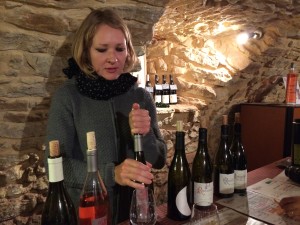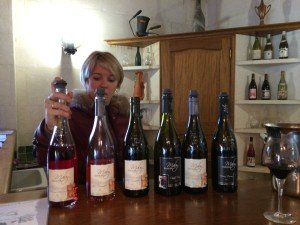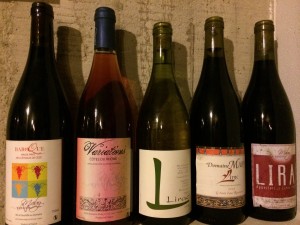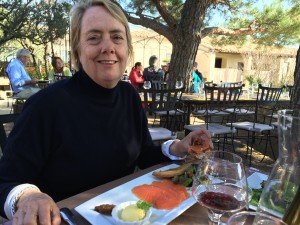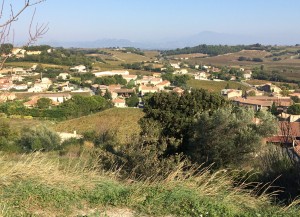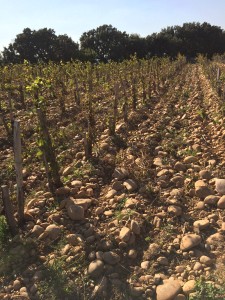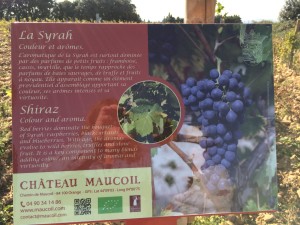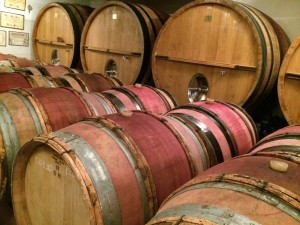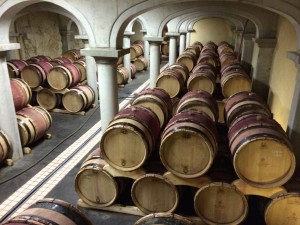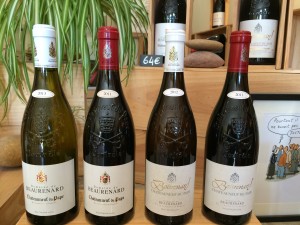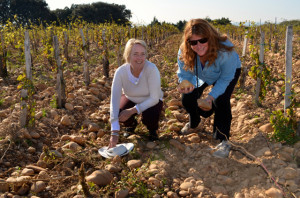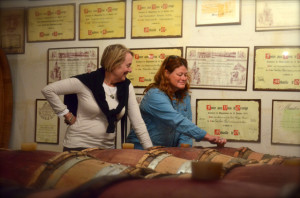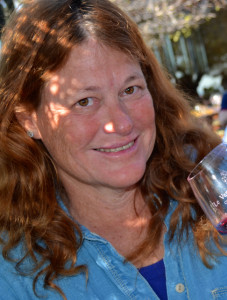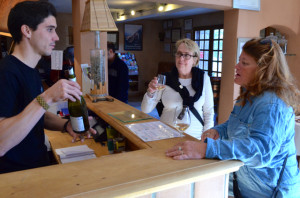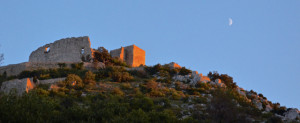“Ah but how can it possibly be as good as Australian Shiraz,” I challenge the wine maker at the Brotte winery and museum in the charming town of Chateauneuf-du-pape, near the Rhone River in north eastern Provence. “There is no comparison,” he replies. “Your Shiraz grape vines came from our Syrah vines… You may have a beautiful country, but we have the best wines.”
I did as the wine museum instructs, checking the colour from several angles, sniffing its odour, then swirling and smelling again, before taking a taste of the 2012 Les Murets wine made from Syrah grapes grown in the north of the Rhone valley. As the rich, smooth berry tastes explode as I ‘chew’ the wine, I do wonder if my memory of Australian Coonawarra Shiraz is perhaps a little dusty after 8 months in Europe. Les Murets is truly delicious and my friend Pamela encourages me to splurge 38 euros on a bottle to drink during rest of our stay in Uzes in southern France. Until now, we’ve struggled to spend more than 5 euros a bottle at local supermarkets, and the wine has been wonderful, but I don’t hesitate to make the purchase – that’s how good it tastes.
We have five days left at Uzes, and I wonder if we will actually get through this and the other four bottles we’ve purchased already on our wine tour with Joe McLean, a Canadian who has made this part of France his home for more than 20 years.
We’re towards the end of our day long tour in late October. After a chilly start and some warming coffee in Uzes, the day has brightened into a brilliant blue as we’ve driven the spectacular wine landscape of the rolling ‘garrigue’ limestone country in north eastern Provence.
Joe, an ex-Chef and photo journalist, has taken us to his favourite wineries in this region and each wine we’ve tasted has been delicious. We’re surprised to find that most French wines are a blend of at least 2-3 grape varieties, and often more. The Syrah or Shiraz wine I purchase is an exception. We wander the vineyards and feel the large round stones that choke the fields where wine grows best as the roots plunge deep into the earth beneath the rocky surface to suck up the sweetest of nutrients.
We spend lunch at the restaurant just below the ruins of the summer papal château. Pope John XXII planted vines here in the 14th century and they have thrived in the stony ‘terroir’. The château may have been destroyed by the Protestants during the seemingly endless series of ‘Wars of Religion’, but the vines have survived intact; wine beating religion every time. In the distance, as your eyes follow the mighty but destructive Rhone, you can see Avignon with its famous and prominent papal palace – a reminder of when the Vatican moved from Rome to France for much of the 14th century.
I always believe the best complement to excellent red wine is excellent dark chocolate, and Joe does not disappoint. Before our journey home we stop at a local chocolate shop and sample its wares before driving home along narrow twisting roads, through stone villages with an inevitable cathedral or two, and beside low forests of dense blue-green scrub. Joe stops to take a photo of the half moon shining brightly against the luminous greying blue sky and a nearby stone ruin. A most excellent way to spend nine hours in Provence, France with the wonderful and delightful Joe McLean. http://www.promo-vinum.com/gb/winetours/ (Joe took the last 5 photos below)

